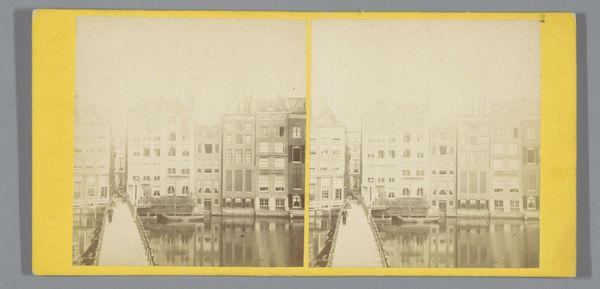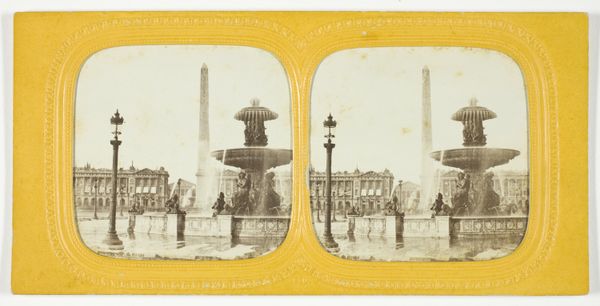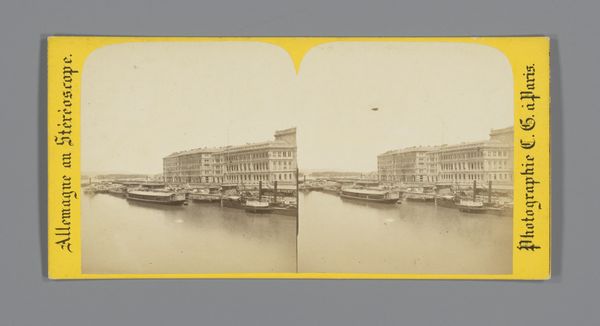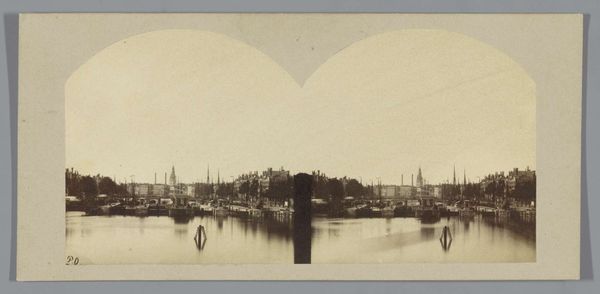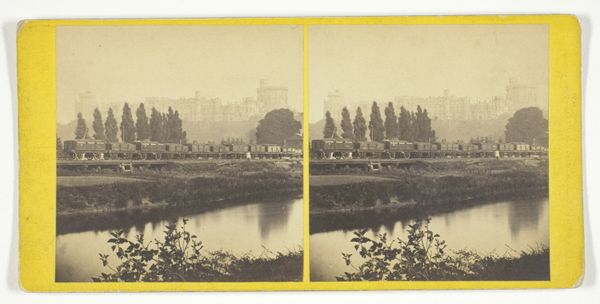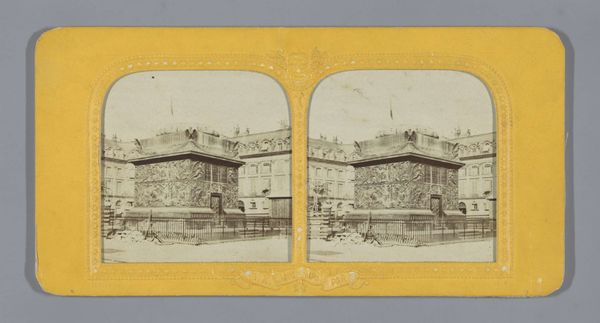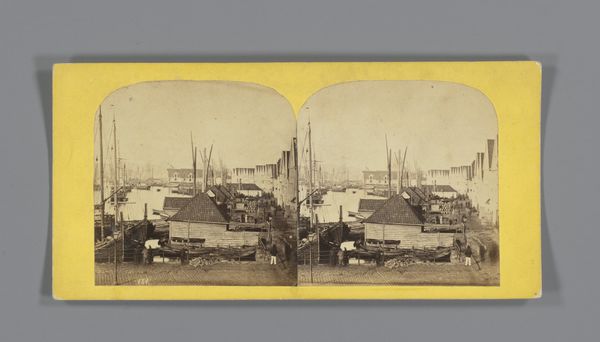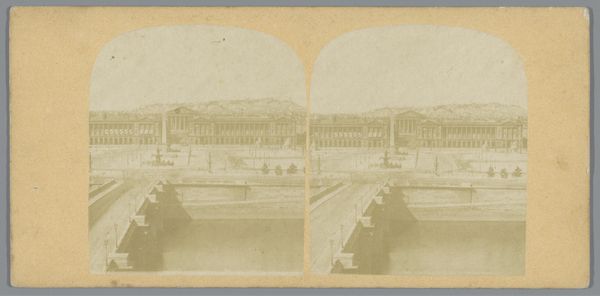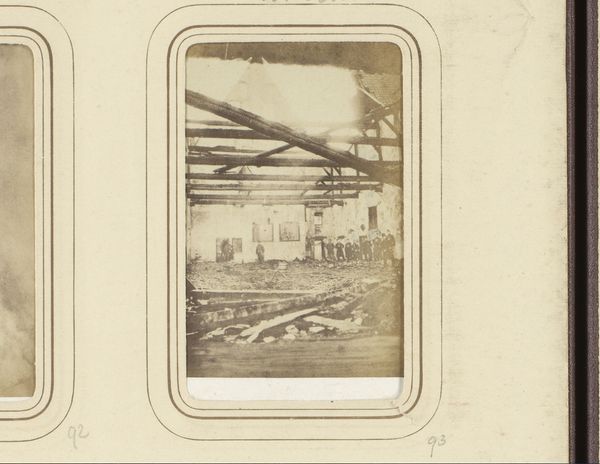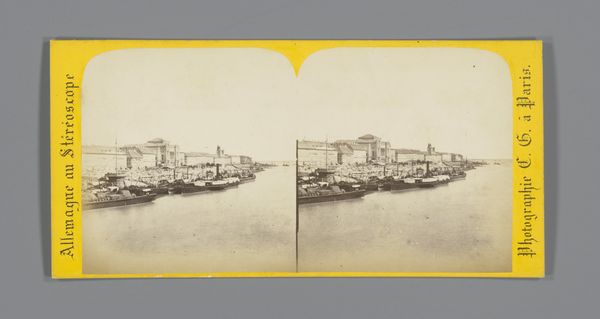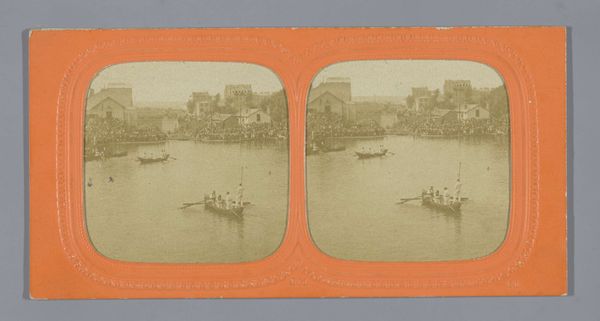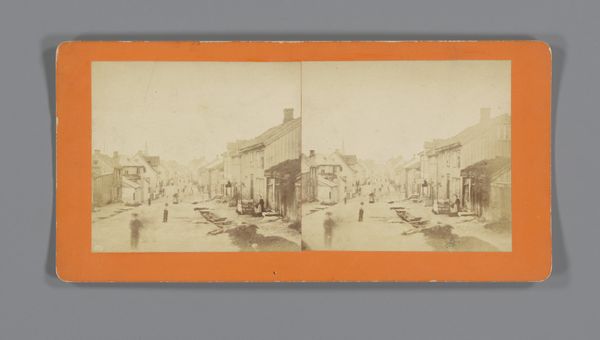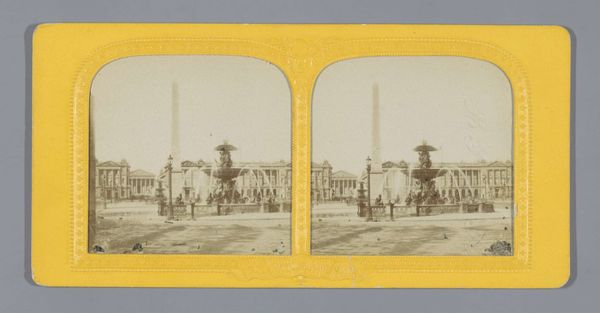
photography, gelatin-silver-print
#
toned paper
#
dutch-golden-age
#
street-photography
#
photography
#
gelatin-silver-print
#
cityscape
#
watercolor
#
realism
Dimensions: height 87 mm, width 177 mm
Copyright: Rijks Museum: Open Domain
This stereoscopic image, made by Jules Marinier, presents a view of the Kloveniersburgwal in Amsterdam. It was achieved through a photographic process involving the careful manipulation of light-sensitive chemicals on a glass or paper support, now faded to sepia. Photography’s advent in the 19th century was deeply intertwined with industrial advancements and an emerging visual culture. The proliferation of photographs like these, facilitated by new technologies and distribution networks, speaks to a growing appetite for capturing and consuming images of the world. The stereoscopic format, which creates an illusion of depth, offered viewers an immersive experience. Consider the labor and materials involved: from the mining of silver for the photographic emulsion to the skilled craftsmanship required to operate the camera and develop the print. The production of these images, which are now quaint and antique, reflects the capitalist mode of production. By considering these aspects, we can better understand the complex social and economic forces that shaped not only the image itself but also the world it represents. It prompts us to challenge the traditional boundaries between art and commerce, urging us to appreciate the intricate web of relationships that connect the artwork to its historical context.
Comments
No comments
Be the first to comment and join the conversation on the ultimate creative platform.
